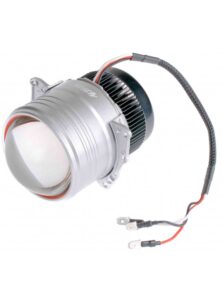Universal Super Bright Dual Color Car LED Headlight
Universal Super Bright Two-color Car LED Headlight
Refers to a type of automotive headlight that uses LED (Light Emitting Diode) technology to produce a brighter and more efficient lighting solution for a vehicle.
The “two-color” feature likely refers to the ability of the LED headlight to switch between two different colors, such as white for normal driving conditions and yellow for foggy or rainy conditions. This feature can help improve visibility and safety while driving in different weather conditions.
The term “universal” in this context suggests that the LED headlight is designed to fit a wide range of different car models and can be easily installed without the need for extensive modifications or customizations.
It’s important to note that the use of aftermarket LED headlights may not be legal in all regions, and it’s always advisable to check local regulations before installing any modifications to a vehicle. Additionally, it’s important to choose high-quality and reliable LED headlights from reputable manufacturers to ensure safety and avoid potential electrical problems or malfunctions.
Head and additional LED headlights for cars
Headlights are an essential safety feature on any car, and LED headlights have become increasingly popular in recent years due to their brightness and efficiency. Here are some types of LED headlights for cars:
- Halogen Headlights: Halogen headlights are the most common type of headlight found in most cars. They are relatively inexpensive and easy to replace but are not as bright or energy-efficient as LED headlights.
- LED Headlights: LED headlights are brighter and more energy-efficient than halogen headlights. They are also more durable and have a longer lifespan. However, they can be more expensive than halogen headlights.
- HID Headlights: HID headlights (High-Intensity Discharge) produce a brighter and more intense beam of light than halogen or LED headlights. They are also more energy-efficient, but they can be expensive to replace and install.
- Laser Headlights: Laser headlights are the newest type of headlight technology. They use lasers to produce a brighter, more intense beam of light than other headlights. However, they are currently only available in a few high-end luxury cars.
In addition to headlight options, some car owners choose to add additional LED lights for improved visibility and style. Here are some types of additional LED headlights for cars:
- Light Bars: LED light bars are long, narrow bars of LED lights that can be mounted on the front or back of a car for improved visibility in off-road or low-light conditions.
- Fog Lights: LED fog lights provide a low and wide beam of light that can improve visibility in foggy or misty conditions.
- Daytime Running Lights: LED daytime running lights are designed to increase the visibility of a car during the day. They are typically installed in the front of the car and turn on automatically when the engine is running.
Overall, choosing the right type of headlight and additional LED headlights for your car depends on your specific needs and preferences. Consider the type of driving you do and the conditions you encounter to determine which headlights will provide the best visibility and safety.
Is it possible to install LED lamps in fog lights for a car?
Yes, it is possible to install LED lamps in fog lights for a car. In fact, many car owners choose to upgrade their fog lights with LED lamps due to their brighter and more efficient lighting compared to traditional halogen bulbs.
However, it’s important to note that not all LED lamps are suitable for use in fog lights, as they may produce glare or interfere with other drivers’ vision. When selecting LED lamps for fog lights, it’s important to choose ones that are specifically designed and approved for use in automotive fog lights, and that have a beam pattern that is suitable for the application.
Additionally, it’s important to ensure that the LED lamps are compatible with the electrical system of the vehicle and that they do not exceed the maximum power or current rating of the fog light circuit. Overloading the circuit can cause damage to the electrical system or create a fire hazard.
It’s always recommended to consult a qualified mechanic or automotive specialist before installing any modifications to a vehicle, including LED lamps in fog lights, to ensure that the installation is safe and compliant with local regulations.
Advantages and disadvantages
Universal super bright two-tone automotive LED headlights are a type of aftermarket car lighting that offer several advantages and disadvantages. Here are some of the most significant:
Advantages:
- Improved visibility: LED headlights are known for their brightness and clarity, which can significantly improve visibility while driving, especially in low-light or nighttime conditions.
- Energy efficiency: LED headlights are more energy-efficient than traditional buydo.eu halogen headlights, which can help to save fuel and reduce carbon emissions.
- Longevity: LED headlights have a longer lifespan than halogen headlights, which can save money in the long run on replacement costs.
- Stylish appearance: LED headlights can give your car a modern and stylish appearance, which can be a desirable feature for many car enthusiasts.
Disadvantages:
- Cost: LED headlights are typically more expensive than halogen headlights, which can be a significant disadvantage for those on a tight budget.
- Glare: LED headlights can produce a harsh glare that can be distracting or blinding to other drivers on the road. This can be a safety concern, and it is important to ensure that your LED headlights are properly adjusted to avoid this issue.
- Compatibility: LED headlights may not be compatible with all types of vehicles, and installation may require modifications to the car’s electrical system.
- Heat: LED headlights can generate heat, which can cause damage to the headlight assembly or other parts of the car if not properly installed or managed.
Overall, Universal super bright two-tone automotive LED headlights can be a great choice for those looking to improve the visibility and appearance of their car, but it is important to weigh the advantages and disadvantages carefully before making a decision.
Kinds
There are several types of universal super bright two-color car LED headlights available in the market. Here are some of the popular ones:
- Dual-color LED Headlights: These headlights offer both white and amber light. They can be used as headlights and turn signals, making them an efficient choice for car owners.
- RGB LED Headlights: RGB LED headlights offer multiple color options, which can be controlled by a remote or a smartphone app. These headlights are perfect for car enthusiasts who like to customize their car’s look.
- Sequential LED Headlights: These headlights feature a sequential turn signal, which means the LEDs light up one after the other, creating a stunning visual effect. They are available in both white and amber colors.
- Bi-Xenon LED Headlights: These headlights use both LED and Xenon technology to provide a powerful, bright light that illuminates the road ahead. They are perfect for drivers who often drive in low-light conditions.
- Halo LED Headlights: Halo LED headlights feature a ring of light around the headlight, which creates a unique look. They are available in both white and amber colors and can be used as daytime running lights or turn signals.
Overall, the choice of universal super bright two-color car LED headlights depends on personal preference and specific needs, such as the type of driving and road conditions. It’s important to check the compatibility of the headlights with your car before making a purchase.

How to choose
Choosing universal super bright two-color car LED headlights can be a daunting task since there are several types and brands to choose from. Here are some factors to consider when selecting the right headlights for your car:
- Brightness: The brightness of the headlights is an important factor to consider. Look for headlights that provide a bright and clear beam of light to help you see clearly on the road.
- Color temperature: LED headlights are available in a range of color temperatures, from warm white to cool white. Select the color temperature that is comfortable for you to drive with.
- Compatibility: Make sure that the headlights you choose are compatible with your car’s make and model. Universal headlights may fit most cars, but it’s always best to check the compatibility before purchasing.
- Beam pattern: The beam pattern of the headlights can affect how well you see on the road. Look for headlights that offer a wider and more focused beam pattern to provide better illumination.
- Dual color: If you’re looking for headlights that also function as turn signals, then consider dual-color LED headlights. They offer both white and amber light and can be used as headlights and turn signals.
- Brand reputation: It’s always best to choose headlights from reputable brands that have a good track record of quality and customer satisfaction.
- Price: LED headlights are available at different price points. While it’s tempting to go for cheaper options, keep in mind that quality can be compromised. Invest in high-quality headlights that will last longer and provide better illumination.
Overall, the right choice of universal super bright two-color car LED headlights will depend on your specific needs, preferences, and budget. Do your research and choose the headlights that best fit your requirements.
Installation
Installing universal super bright two-color car LED headlights can be a bit tricky if you don’t have experience with automotive electrical systems. Here’s a general guide on how to install them:
- Gather the necessary tools: You’ll need a screwdriver, pliers, wire cutters/strippers, and electrical tape.
- Remove the old headlights: Use the screwdriver to remove the screws holding the old headlights in place. Carefully disconnect the wiring harness from the old headlights and set them aside.
- Install the new headlights: Follow the instructions provided with the new headlights to install them in the same location as the old ones. Make sure they are securely fastened and aligned properly.
- Connect the wiring: Connect the wiring harnesses from the new headlights to the existing wiring in your car. Typically, you’ll need to connect the power, ground, and turn signal wires.
- Test the headlights: Before finishing the installation, turn on the headlights and test that both colors are working properly.
- Secure the wiring: Use wire ties or electrical tape to secure the wiring and prevent it from rubbing against other parts of the car.
- Reassemble the car: Once you’re satisfied that the new headlights are installed and working correctly, reassemble any parts you removed during the installation process.
It’s important to note that the installation process may vary depending on the specific make and model of your car and the type of headlights you are installing. If you’re unsure about how to proceed, it’s always best to consult a professional mechanic or installer for assistance.
Related Posts
Leave a Reply Cancel reply
You must be logged in to post a comment.



